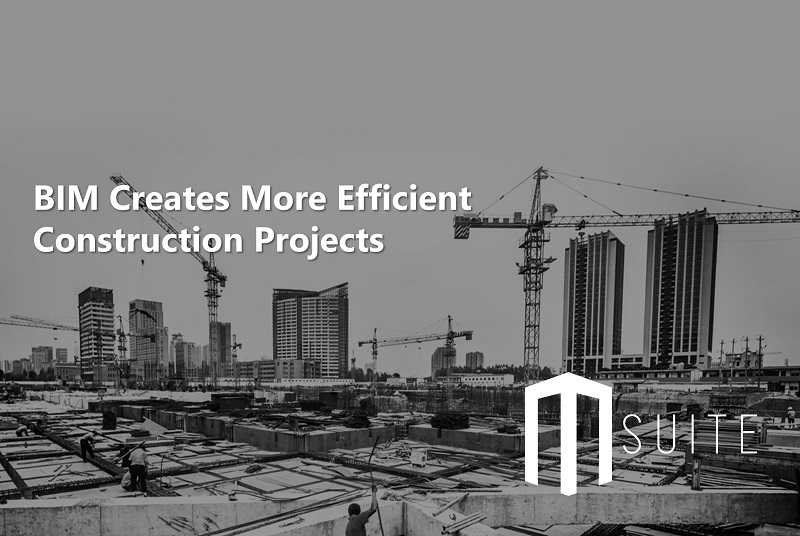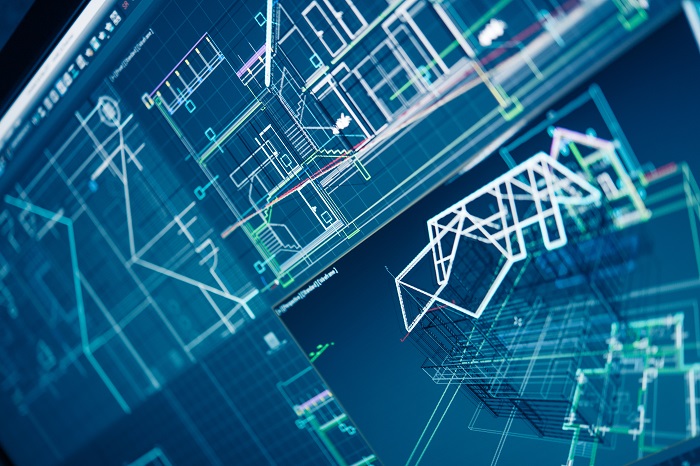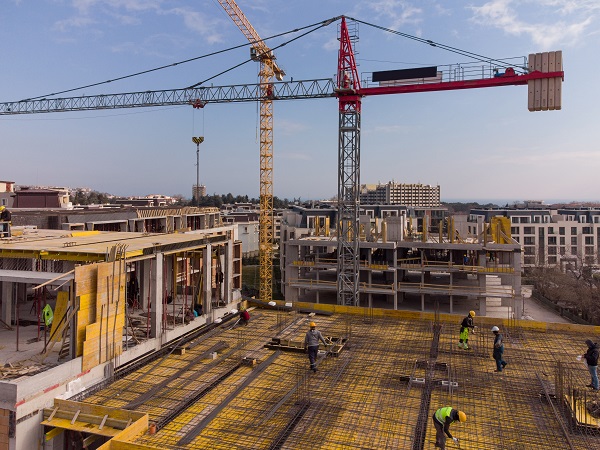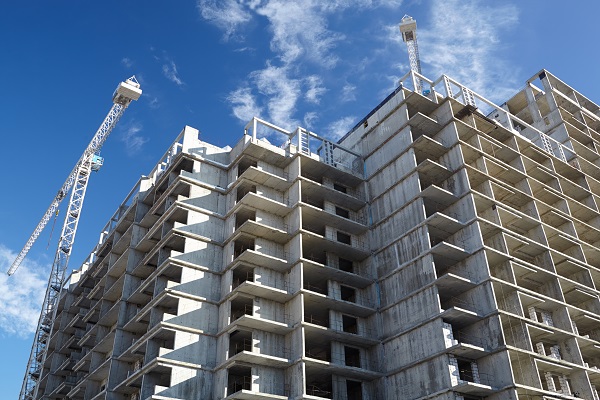Before diving into how Building Information Modeling (BIM) adoption for contractors is crucial, it’s essential to understand the benefits BIM can provide contractors throughout the construction process, including the project delivery method, contracting structure, and the varying levels of stakeholder involvement in the BIM Model.
Construction Project Delivery Methods & Building Information Modeling
Project Delivery is a workflow that involves three phases: planning, design, and construction. The owner primarily decides with their partner on the best project delivery method to execute the project. Various delivery methods include:
Design-Bid-Build is the most popular and traditional project delivery method in the U.S., which typically includes three phases of the project:
- The design phase involves the initial “designer of record” for the structure and critical elements.
- The bid phase involves circulating RFPs for general contractors and possibly subcontractors to bid on specialty areas and award the work.
- The build phase is when construction occurs until the project completes.
Design-Build – This is another popular delivery method involving one entity (the design-builder) with a single contract to offer architectural design and self-performing construction services.
Other project delivery methods include Multi-Prime, similar to the design-bid-build project delivery method with three phases. Construction Management at Risk (CMR) consists of a well-defined schedule and price, either a guaranteed maximum price (GMP) or a fixed lump sum for completing the project. Each has unique features for determining the best project delivery method for the owner, general contractor, and subcontractors.
Building Information Modeling benefits during each Phase of a project.
Building Information Modeling (BIM) has been at the epicenter of the AEC industry, yet there remain misunderstandings regarding its technology and process. For example, BIM is technology, a tool, and a 3D-designed project. It also involves a method for creating a virtual representation of physical and functional characteristics. BIM is a 3D model-based process that enables contractors to increase accuracy and efficiency, which helps project profitability making BIM the standard in the AEC industry.
BIM’s multifaceted benefits include:
- The project representation.
- Managing all information related to a project.
- Producing the model as an output.
Phase I: Preconstruction Benefits & Building Information Modeling
During preconstruction, a general contractor and stakeholders work closely with the client. Designers leverage BIM models to give subcontractors requirements for accurate cost estimates and project schedules for the constructability of the design. In the preconstruction phase, Building Information Modeling produces visuals for contractors to identify and manage risk based on identifying design flaws, reducing rework and unnecessary project costs.
- BIM4D Project Visualization helps contractors visualize and plan the entire project timeline before breaking ground to gain a more profound project scope. BIM offers an immersive 3D experience without losing crucial info and provides an uncompromising vision of the project proposal.
- BIM 5D Accurate Cost Estimation helps contractors accurately estimate the building costs, systems, materials, and equipment to make realistic and suitable bids. Manually calculating estimates based on 2D take-off designs or archaic software makes it challenging to achieve high accuracy and creates tedious, time-consuming work, and vulnerable to mistakes. BIM’s fifth dimension-cost estimation enables contractors to attribute the most negligible expenses to the exact cost center. Hence, they can develop more accurate bids by accounting for all the factors affecting cost and process acceleration and creating estimate cushions and reducing risk.
Phase 2: Construction Benefits & Building Information Modeling
GCs are typically responsible for the overall execution of the project, and BIM helps provide data to bring efficiency to assigning tasks to project stakeholders and leverage the model to track and update project progress. BIM can be linked to the project schedule tracking productivity on a detailed level to offer the full project team transparency and increase collaboration. A project can have multiple BIM models used by subcontractors and project teams. All changes and progress can be continually updated and visible if linked to the model.
BIM can be used for the entire construction lifecycle
Managing contracts, bids, and input – General contractors and other construction leaders can improve the entire contract management process with BIM. For example, set agreements and establish a BIM model for the collaborative working environment for all teams to master their own BIM model.
Teamwork such as design and planning and the subcontractor teams can collaborate in a shared data environment and manage individual responsibilities on a holistic and detailed level throughout the project.
- Effective Change Order Management: It’s nearly impossible for contractors to predict Change Orders, and these can cripple a project in many areas; schedule delays, profitability, or worse, lay grounds for lawsuits. BIM can automatically detect changes, additions, modifications, etc., and can prevent delays and unnecessary costs associated with change orders.
- Reducing & Eliminating Paper used for communication across construction projects, BIM can help assign crucial responsibilities in the form of model updates, and trade contractors have real-time access to details while continuing to provide feedback on constructability issues.
- Streamline Requests for Information (RFIs): RFIs are common when trade contractors work on the jobsite. Sometimes this process is riddled with errors, and paper and response times cause delays.
Contractors leverage BIM to generate better insights for effectively controlling any change as BIM presents changes visually, including associated quantities and costs. It creates a digital process for the trade contractors, general contractors, and suppliers to be more efficient in handling constructability issues and getting those issues resolved through the BIM model management by the general contractor. Updates alert stakeholder teams beyond the jobsite to achieve resolution.
Project Managers and stakeholders now have a single source and tool to supervise day-to-day duties to eliminate time interpreting complex CAD structures or 2D maps. In addition, contractors are briefed with 3D, time-sensitive models and the assigned tasks helping teams improve productivity and efficiency.
Post-Construction Phase 3 & Building Information Modeling
Once the building is completed, BIM helps a general contractor package up assets and complete this stage smoothly for the building operator.
BIM for Facility Management helps contractors present asset briefs for operations to manage assets as they take over. The BIM model includes detailed building, product, and component-level information crucial to the structure.
Improving Close-Out: Since the end goal and list of deliverables are crystal clear from the start of the project, it becomes easy for the general contractor to go through their checklist from the contract tender and ensure that the project has been completed. Leveraging BIM, the close-out process becomes substantially more straightforward.
Conclusion
BIM used for planning, design, and collaboration across project stakeholders improves the project lifecycle. As a result, contractors can leverage BIM to facilitate their delivery of projects faster and better. As a result, the BIM market was valued at $5.4 billion in 2020 and is projected to reach $10.7 billion by 2026.
Building Information Modeling is rapidly gaining traction in the construction industry; It provides Contractors the means to efficiently manage and execute construction with increased productivity, efficiency, quality, safety, and profitability. In addition, contractors greatly benefit from adopting BIM sooner for their projects.
BIM is more than technology and involves a complex design and construction process that helps all stakeholder teams design and build innovative structures for the future.
Five BIM benefits during the design and construction process:
- Improved communications and coordination
- Greater efficiency and shorter project lifecycles
- Cost and resource savings and costs
- Increased product quality
- More prefabrication and modular construction on every project
When your teams utilize BIM during construction, your labor resources can go much further to build dynamic structures as efficiently as possible. It’s time to take a closer look at what BIM construction can do for your firm if you’re not already leveraging it.










